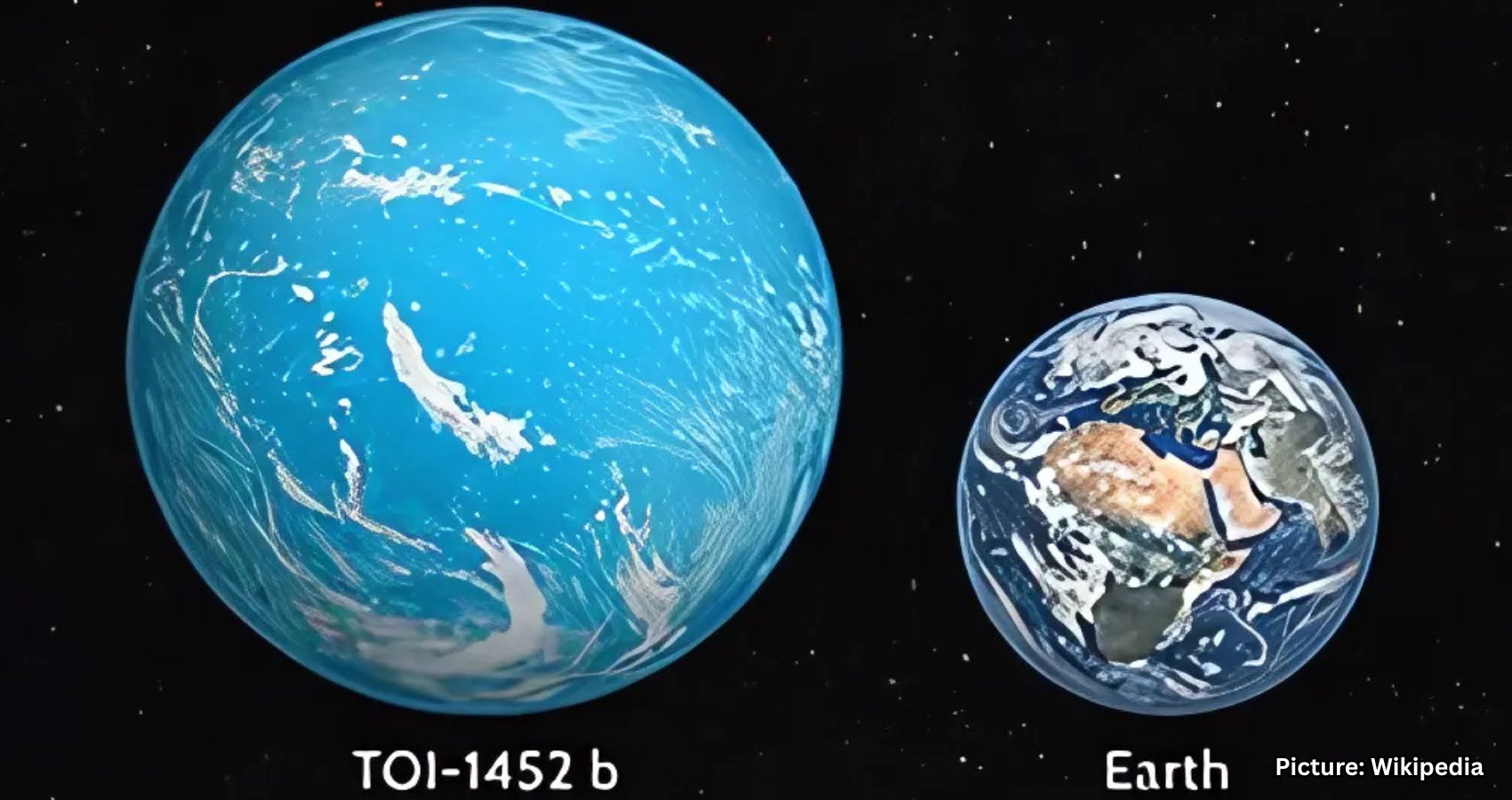A remarkable exoplanet located merely 100 light-years away from Earth has caught the attention of the astronomical community. Identified as TOI-1452 b, this celestial body is not just another planet outside our solar system—it might be the first documented “ocean planet.” Scientists believe that up to 30% of this planet could be covered in water. The potential presence of such a large amount of water on a distant planet is stirring conversations about the possibility of life beyond Earth.
What makes this finding even more intriguing is the apparent contradiction between the planet’s physical characteristics and current scientific understanding. TOI-1452 b orbits a star in a zone where prevailing theories in physics and chemistry suggest that liquid water shouldn’t be able to exist. Despite this, all available data points to the possible presence of vast water reserves. As one researcher observed, “The unthinkable seems real: TOI-1452 b challenges everything we thought we knew about exoplanets!”
This potentially groundbreaking discovery has prompted many scientists to label TOI-1452 b as a kind of cosmic cousin to Earth, albeit a more distant and significantly larger one. In terms of physical features, this exoplanet has an ideal combination of properties that set it apart: low density, a balanced temperature based on the energy it receives from its star, and a substantial size.
Initial scientific assessments hint that the planet might be composed of layers of water or ice, possibly resembling the hidden subsurface oceans found on some of our solar system’s moons, such as Ganymede and Enceladus. Located in the Draco constellation, TOI-1452 b is also perfectly positioned for detailed study by the James Webb Space Telescope. The telescope is already being readied to analyze the planet’s atmosphere for any indicators of habitability—or even signs of life.
From a classification standpoint, TOI-1452 b qualifies as a “super-Earth.” Although the term may sound dramatic, it simply refers to a type of rocky planet that is larger than Earth but smaller than the gas giants such as Neptune or Jupiter. With a diameter 70% greater than Earth’s and a mass approximately five times larger, it certainly earns this designation.
What really piqued scientists’ interest was the planet’s density. Based on the numbers, something didn’t quite add up. A planet of that size and mass should be composed primarily of rock or metal, but the relatively low density pointed to another possibility. “Was it a bird? A plane? No! Water!” one scientist quipped, highlighting their conclusion that the most plausible explanation for the low density is a substantial water composition. The presence of such a significant amount of water would also explain how the planet could support potentially habitable conditions, despite its closeness to its host star.
Indeed, TOI-1452 b orbits its star in just 11 Earth days, indicating that it lies very close to the star. Under normal circumstances, a planet in such proximity would be far too hot to support liquid water. However, TOI-1452 b’s host star is not a sun-like star. It is a red dwarf, significantly smaller and cooler than our Sun. This difference may allow the planet to retain moderate temperatures, potentially supporting water in its liquid state. “Isn’t it incredible?” the article exclaims, reflecting widespread astonishment in the scientific community.
To uncover more about this strange world, all eyes are now on the James Webb Space Telescope. The plan is to analyze the exoplanet’s atmosphere as it transits across the face of its star. This method allows researchers to detect specific gases, such as water vapor or hydrogen, in the planet’s atmosphere. Scientists are even optimistic about the possibility of detecting organic molecules—biosignatures that could indicate the presence of life. Are we witnessing the first step toward discovering life beyond Earth?
The label “water world” is not given lightly. While the presence of water on TOI-1452 b has not yet been directly confirmed, the planet exhibits more Earth-like features than any previously discovered exoplanet. That alone makes it a strong candidate for the first confirmed water-covered planet outside our solar system. “We can say that TOI-1452 b is emerging as the planet with the most characteristics similar to Earth,” notes the report.
The broader scientific mission remains focused on understanding how planetary systems form and evolve. However, discoveries like TOI-1452 b inevitably turn the discussion toward the age-old question of life beyond Earth. Based on what is currently known, it’s conceivable that TOI-1452 b could support life in ways similar to Earth. Although, as the article humorously suggests, “maybe they’re not as conflictive as us humans.”
One of the most exciting implications of this discovery is what it suggests about the prevalence of habitable planets in our galaxy. If a planet so close to its star can sustain large quantities of water, perhaps the criteria scientists use to define “habitable zones” have been too narrow. Without a doubt, what stands out most about this discovery is that, if a planet so close to its star can have large amounts of water, we may have underestimated the number of habitable worlds in our galaxy!
In essence, TOI-1452 b may be more than just an exciting discovery. It could mark a turning point in the search for extraterrestrial life, redefining what scientists look for when evaluating whether a planet might support life. As technology advances and more exoplanets like this are observed, the chances of finding a truly Earth-like world—or even alien life—continue to grow.

